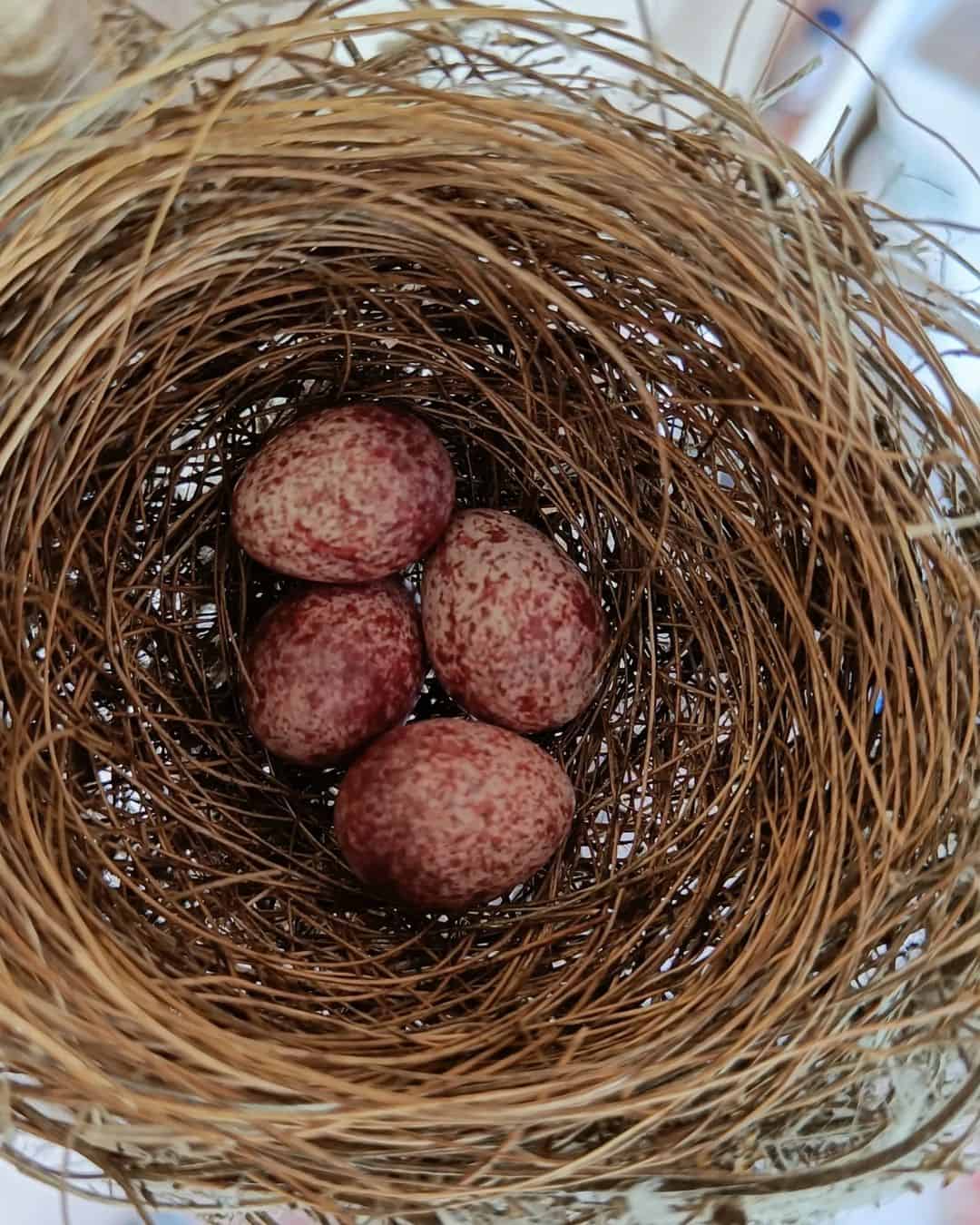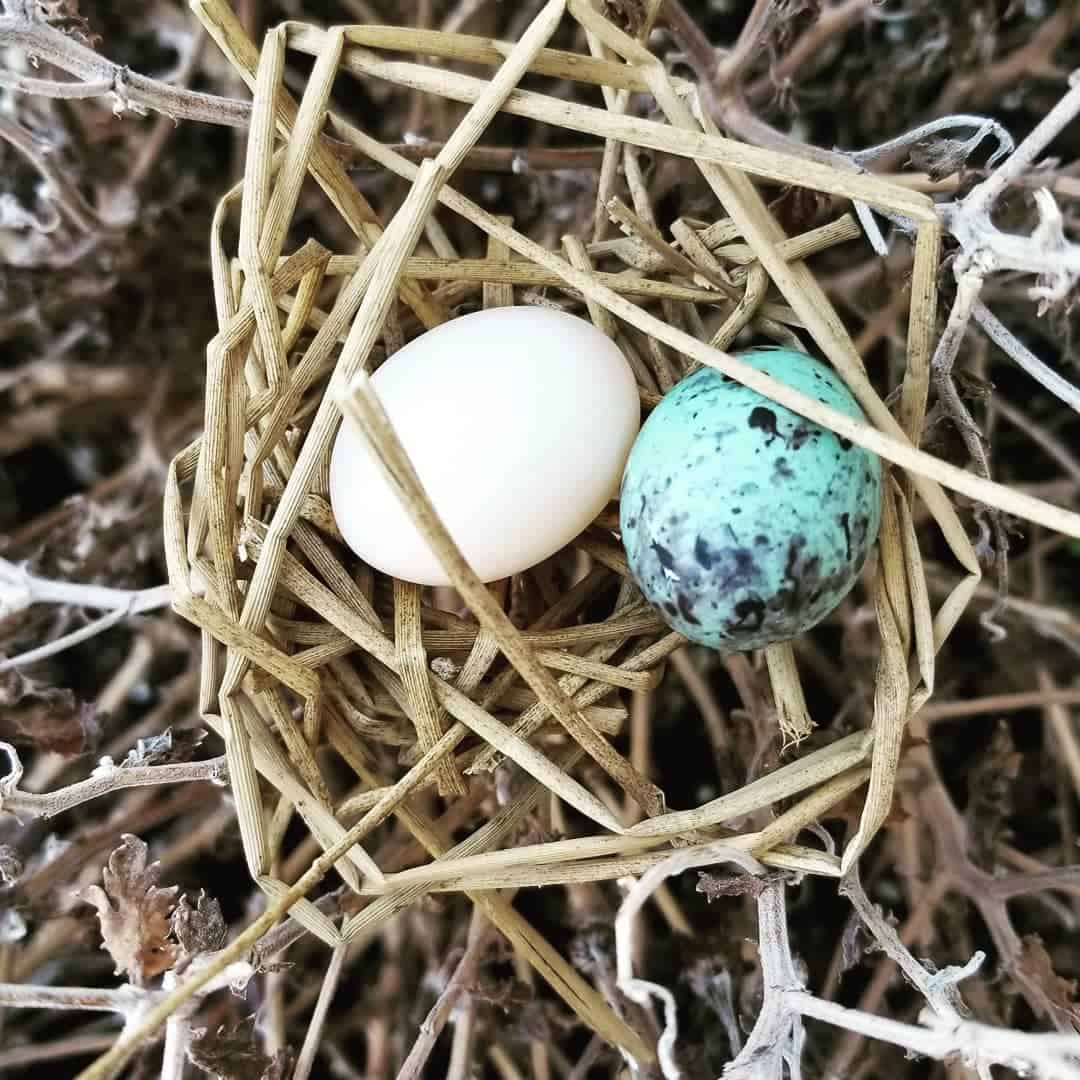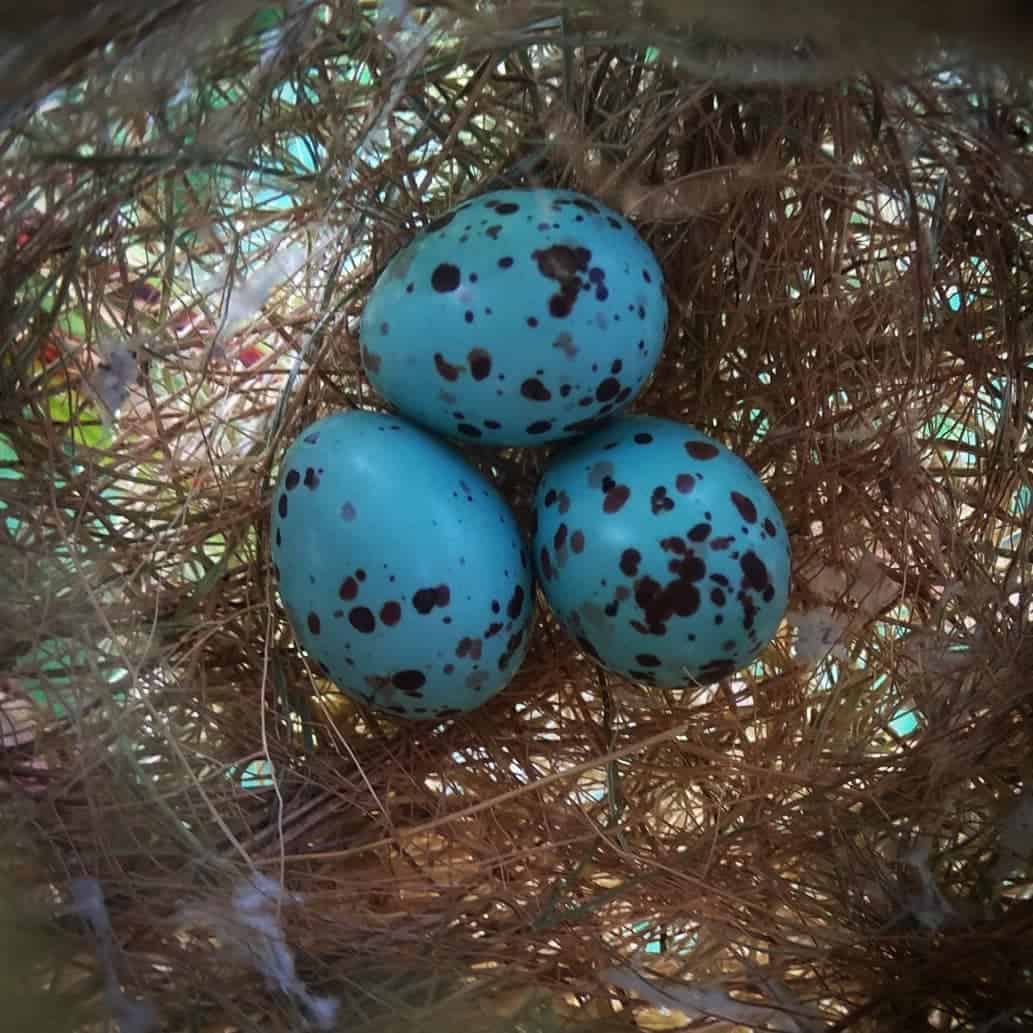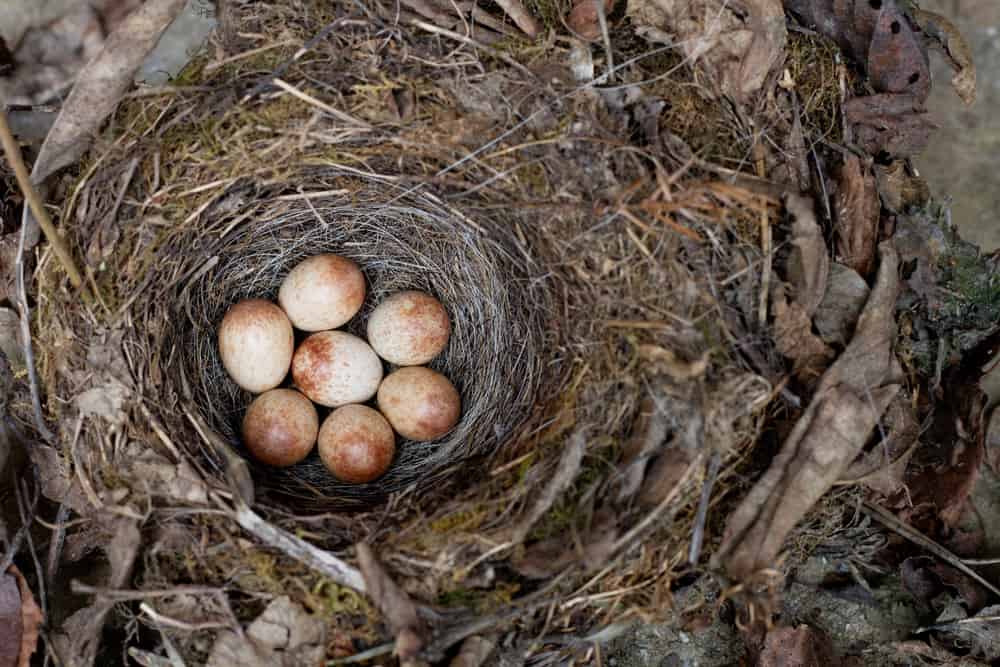Originating from Europe, sparrows are everyday birds, mostly seen in urban and suburban areas. Although they may not be everyone’s favorite, they’ll usually show themselves in your backyard. They normally nest in cavities but can use dense vines, enclosures, hair, grass, feathers, and trees as alternatives.
Most birders or enthusiastic bird lovers/watchers like to know how to identify sparrow eggs so as to know how to control their living environment. Also, it is interesting to know what distinguishes their eggs from others. Here’s some information about sparrows and how to identify their eggs
What Are Sparrows?
Sparrows (passer domesticus) are from the Passeridae family, the most common species being house sparrows. House sparrows mostly associate themselves with humans and are mostly seen perched on buildings and homes, which explains their names. They avoid grasslands and deserts, anywhere not close to human habitation, and any urban environment.
House sparrows are ubiquitous little birds that you may sometimes be pushed to chase off your porch or kitchen vents. However, their nesting and personality are quite interesting. They can be seen in every sub-urban area in South, Central, and North America. Their females and little ones are brown and grey while the males have a range of white, black, and brown colors.
How to Identify House Sparrow Eggs
House sparrow eggs are easily identifiable from other birds’ eggs. They are small usually white eggs, about 1.5 centimeters in size. They have a glossy texture and although they are mostly white, can sometimes tint towards green or blue. Also, these eggs often have thick brown or blue-grey spots that make them look unique.
House sparrows may sometimes lay their eggs in a messy nest with materials like twigs, feathers, and leaves. They lay three to six eggs at once, but their clutch size may differ depending on the breeding density, environment female’s age, and season condition. In higher altitudes, house sparrows lay lesser eggs due to the cold weather.

Different Sparrow Eggs Sizes
One reason identifying sparrow eggs may be challenging is that sometimes sparrows lay eggs of different sizes. They may lay larger eggs, with as much as a 50% difference; usually, the sparrows that hatch from larger eggs are usually bigger which is normal. Larger eggs help young sparrows survive short-term by providing energy reserve on occasions when the parents need to go in search of food in rainy seasons.
However, researchers have discovered that sparrows from smaller eggs do better in warmer temperatures and will need extra reserves in low temperatures. These reserves are also good for high temperatures to help in long-term survival. Summarily, house sparrows predict weather and conditions, and seasons to determine what’s best for their eggs.
House Sparrows Nesting
House sparrows can build their nests in the holes of houses and other buildings, gas-station roofs, kitchen vents, signs, and outdoor lighting fixtures. They also build their nest in trees but are usually found close to human habitation; this is usually because of their accessibility to food, protection, and shelter. Or they just simply like the bustling of the city. The downside is that they can sometimes find an entrance hole into your house.

Nest Building
Usually, nest building depends on whether or not the males are unmated. Unmated males find a nesting site and start building their nest. They use dried vegetation to stuff the hole they’ve deemed their nesting site until it’s packed. Then, they introduce other materials like string, paper, hair, twigs, and feathers to line it. The size of their nests also depends on the space available to them and the size of their colonies. They can use their nest throughout the year and breed four broods in the same nest.
House sparrow nests often form a spherical shape of about 8 to 10 inches in diameter. And although their nest can be quite messy and clustered, they can reuse even after using it for so long. Additionally, they can be annoying bullies and compete for nest boxes, taking over the nest boxes of bluebirds and native birds.
House Sparrows Mating
House sparrows primarily live to mate and reproduce to expand their breed, just like every other bird. And this is quite often easy for them since they breed multiple times a year. However, before creating babies is the need to find a mate. Generally, these birds are very faithful and carry stay with one partner for their lifetime and will only look for another mate, if their partner dies.
Their courtship begins early in January and until July. The male house sparrow at first is usually possessive of its nesting site and will usually aggressively chase away other sparrows that encroach on their territories. However, when attracting females to mate, they start to chirp around their nests and even louder, when the females fly closer to their nest. You can liken this to voracious sweet songs to attract a new lover. And to make it better, other males also join in this to also try to attract the same female.
The female eventually chooses their partner and calls for copulation with their chosen one with soft chirps. Then, they mate; this mating process normally occurs during the breeding season from March to August.
Incubation
After the mating ritual, sparrows lay their eggs once their nests are built. They usually lay eggs in the early morning every day. Once they lay brood, sparrows can start laying eggs for another brood after eight days. But this might take longer on certain occasions. They often have up to four broods in a year.
After laying eggs, house sparrows start to incubate the eggs but may wait longer before they start in situations of harsh weather. During incubation, both the male and female House sparrows take turns in sitting on the eggs to keep them warm. Although the female usually spends more time incubating the eggs, as time goes on, usually towards the end of incubation the male starts incubating 50% of the time. Incubation takes 12 days and up to 14 days in cold temperatures
Hatching
The eggs hatch after the incubation period has ended. The young sparrows usually come naked completely naked with a subtle pink skin. Like other newborns, they are usually unable to do anything themselves and can in fact see nothing. Both the female and male House sparrow feed their infants for 14 days after they hatch, and two weeks more until their independent and can find their own food.
After 10 days, the chicks are able to control their body temperature and find their way around after two to three weeks.
Feeding
Young house sparrows can finally leave their nests after they can fly, but before then, they are fed invertebrates. Thus, insects such as grasshoppers, aphids, beetles, and caterpillars are their daily meal. They also eat seeds like sunflower seeds and vegetables when they can’t find insects. However, seeds, vegetables, and grains are usually their adult food.
Although these young pests can leave their nest since they can fly, they usually are not able to food and survive by themselves. Hence, they need to constantly be looked after by the adults, usually, the male as by this time, the female, is preparing to rear another brood.

Once the infants are fully independent, they go in search of food by themselves, often in flocks,s and stop anywhere there are good supplies of seeds and grains. They eat all grains and other things from oats, corn, and wheat to insects like spiders and random garbage. Sparrows might visit your house yard or crevices to find food. So, if you’re looking to attract them, you know what to do.
Behavior
House sparrows are social birds and you just have to get used to seeing them around. They move and feed in flocks and will usually attract bird feeders. They can also be aggressive and domineering, even to each other. Male sparrows usually exhibit this character over females during fall and winter and females, in spring and summer.
House sparrows have a structured hierarchy and move together. Males rank the highest in the flock and have special access to nesting places, food, and females. However, older females rank above males. During winter and extremely cold temperatures, house sparrows move towards the south.
Conclusion
Despite their aggressive and domineering nature, house sparrows have unique and interesting personalities. They are smart birds and great competitors, and you might have a hard time getting rid of their loud chirps from your yard or rooftops.
Their breeding season is relatively slower than that of other birds, but they collectively take good care of their chicks until they are independent. You may find them in farms, and buildings but never in woodlands and forests. They usually also build their nest in trees but will cling more to human settlement. They also love bird boxes with round entrance holes, about 32mm wide.
They are spread all through the United States, Canada, and Europe. However, their population has reduced in certain regions due to low conservation. Birders have taken to ensure the wide propagation of these birds and keep them popularized in the area.
